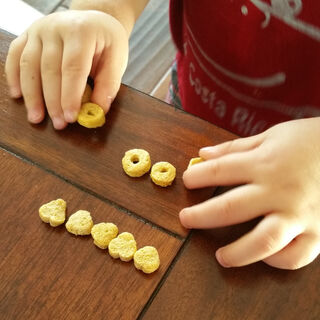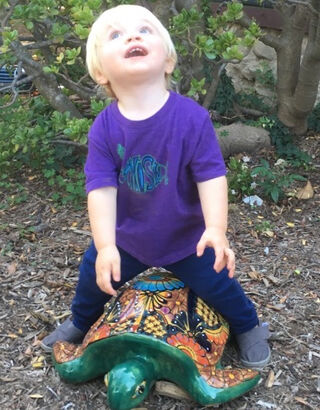Memory
Help Your Kids Study Less and Remember More
After memorizing for unit tests, kids often need to study again for finals.
Posted September 24, 2021 Reviewed by Davia Sills
Key points
- The way the brain works makes it easy for students to forget the material that they crammed right before a big test.
- Having multisensory educational experiences can boost neuroplasticity, creating new neural pathways and connecting different parts of the brain.
- This cements learning and enables students to access the knowledge when they need it.

The trouble with studying
Do your kids do well on the unit tests, but forget what they memorized and need to study it again for final tests? It takes lots of work for kids to memorize and understand so much information for tests. That’s why it is neuro-logical to help kids create and sustain memories that last long-term.
When I taught the elementary school topic of common denominator to fifth graders (and again with the algebra students in middle school), the gap was deep. Even when I showed them their tests successfully taken the year before, they claimed they had neither been taught it nor “learned it.” “What happened?” both they and their parents asked.
The answer is compelling. It turns out that their brains are doing what they are programed to do—store information for maximum memory efficiency. This means the most-used memory circuits are strengthened, and those not used after the test are pruned away. Their common denominator memory circuits, unused after the test, were pruned in the “use it or lose it” fashion.

Sustain memory longer.
The brain prunes away (self-destructs) unused circuits to conserve the energy it takes to maintain them and favors building and strengthening the most used circuits (neuroplasticity—next section).
Information memorized by rote repetition, even though it may result in successful test grades initially, is unlikely to construct into long-term, durable memory. Children need continue to activate those memories and build on their understanding to fashion the durable, long-term memories they can retrieve efficiently for subsequent tests, topics, and application to future topics.
The brain’s neuroplasticity enables memory storage networks to become stronger, more durable, and efficiently retrieved (remembered). Neuroplasticity involves the production of new connections (dendrites, synapses, myelin coating) in the most reactivated (used or applied) neural networks. Each time the learner uses, reviews, applies, or remembers information, skills, or experiences, the stronger and more powerful—more easily recalled—the memory circuit becomes.
Practice makes progress and then practice makes permanent.
For construction of long-term understanding and memory, children need the reinforcement of their learning. To promote this increased construction of the long-term memory network, they need to recognize the value of sustained practice. Explain to them and remind them of the prior accomplishments they achieved using their own neuroplasticity.
Remind them of their successful memory and skill building, whether it was keyboarding, bicycle riding, languages, sports, or progressing further in a video game. They began a novice and succeeded by practice and determination. Practice makes progress and ultimately permanence.
After they get their tests back...
Sustain memories (and motivation) of what they did well. Talk about what they did well in studying. Did they review all the material that was then on the test?
- Let them know that you are confident they can all achieve success.
- After taking the unit test and evaluating their errors, discuss what they would do differently next time in studying or when taking the test. Make this a prediction “game” to compare what they expected would be on the test, what they decided to study, and what was in the actual test questions.
- Can they take a retest, meet with the teacher, and get guidance in recognizing the most critical understandings to achieve greater success and accurate long-term memory?
Sustain multiple sensory pathways for memory. New learning is fragile and lasts only if it is activated (applied, used, reviewed). Because a memory is stored in multiple networks, it’s reinforced each time any of its connecting sensory learning experiences are used, or new ones are added. These activations promote more neuroplastic connections (dendrites, myelin, synapses) between the neurons that held the initial test memory. These fragile pathways are then reinforced into long-term understanding and enduring memory.
For example, when new learning is reactivated through different sensory experiences, learners’ brains construct neural networks connecting multiple sensory storage areas of their brain. This means they can retrieve the information from several areas, especially the ones that were most memorable to them.
For example, when helping kids review concepts of positive and negative, from math, to science, and emotions, promote multiple sensory experiences; these associated memories can be activated when they want to retrieve what they learned about one of the specific topics. When you help them establish these extended memory association storage areas, such as through reminding them of related topics, e.g., temperatures above and below zero, magnetic attraction and repulsion, and the number lines, they are building their brains’ interconnectivity that sustains memory.
When they studied cars, they stored the information in some areas of their brain. To sustain and increase these memories and apply them to later and other topics, help them make associations with other categories that relate to the context. When they see a car, the image goes into the visual image cortex. When we see c-a-r spelled out, that information goes into a language-association region. After learning about the internal combustion engine, an association is made with jets and rocket engines.
You will help them build associational memory links about cars as you continue to “cross-reference” the topic and create a more cross-connected brain. Because all this information is stored in multiple brain areas and cross-referencing occurs among these areas, subsequent thinking about cars connects networks of dendrites to sprout among these memory storage areas. This circuitry permits multiple cues or stimuli to call forth their knowledge about cars and their mechanics when needed later.
Just seeing the word “car” can lead us to recall stored memories of many aspects of cars—the sound of a motor, the feeling of movement, rhyming words, other similar motorized vehicles, etc. We may not need all that information, but because the associations have been created, any of the stored information that we do need is now rapidly and efficiently accessible.
Apply this multisensory memory boost as opportunities come up. There can be opportunities to activate multisensory links after your child has studied and completed the tests about cloud names and characteristics. When looking at clouds with your child, invite them to talk to you about what a cloud could taste, smell, and feel like or ask them to move like a floating or thunder cloud might move.
Mentally manipulating new and already known information increases memory and understanding, thus providing learners multiple ways to apply sustain and apply their learning in future tests, new applications, or situations.
The power of connections
The pathway to long-term, durable understanding and memory is nurtured by the brain’s own neuroplasticity power. When children mentally manipulate new learning, they construct conceptual understanding and enduring, transferrable memory, forming a foundation for transfer to new applications, problem solving, and creative innovation.
Opportunities to use, recall, review, apply, and experience their learning through additional sensory experiences lead to enduring memories. These children should not need to restudy everything for the final exam or when the topic is revisited the following year (think adding fractions by finding the least common denominator).
As you guide them to activate and connect multiple areas of their brains with a variety of sensory experiences, you’ll help them generate a more expansive storage network for remembering long after the first test. When children expand new learning with more connections, they will feel the joy of success and understanding beyond that test.
References
Unlock Teen Brainpower: 20 Keys to Boosting Attention, Memory, and Efficiency. Judy Willis, M.D. November 2019. Rowman & Littlefield Publishing: Lanham, MD. 2019 http://whareotiv.com/2kVr
Research-Based Strategies to Ignite Student Learning: Insights from Neuroscience and the Classroom, Revised and Expanded Edition. 2020. ASCD https://tinyurl.com/y5zzpddl
Upgrade Your Teaching: Understanding by Design Meets Neuroscience. Jay McTighe and Judy Willis, M.D. 2019. ASCD https://tinyurl.com/y3fqdxfd




